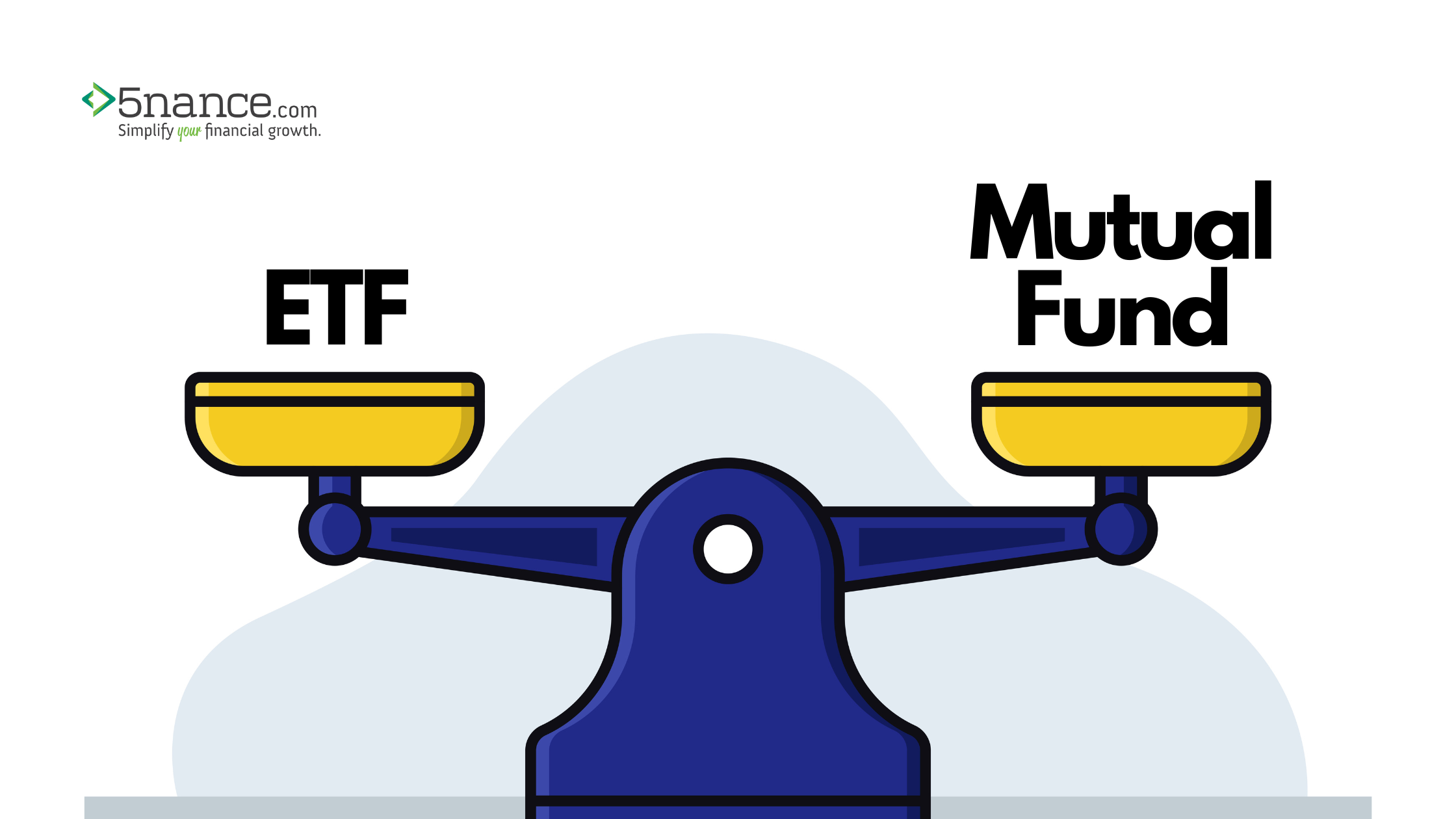
Exchange-Traded Funds and Mutual Funds are both popular investment choices among investors. Both are similar in nature as these types of funds pool money from multiple investors and invest in a blend of diversified assets.
Although there is a lot in common between ETFs and Mutual Funds, the difference is that ETFs can be traded like stocks at different prices throughout the day (like intra-day trading), and mutual funds can be purchased at the end of each trading day, depending on their net asset value. However, the transaction will be visible generally after two working days.
In actuality, ETFs and Mutual Funds both can act as an instrument for long-term investments.
Here’s a peek into the data of ETFs and Mutual Funds as per the US and Indian markets.
Source: The data has been taken from a public doman
Let’s take a closer look at the benefits of ETFs and Mutual Funds:
Benefits of Investing in Exchange-Traded Funds:
ETFs represent a basket of underlying assets, such as stocks, bonds, commodities, or real estate. They offer intra-day liquidity, allowing investors to buy or sell shares at market prices at any time during the trading session. ETFs are passively managed, meaning the fund manager does not select the investments but rather mimics an index that has already been established.
Since ETFs trade on stock exchanges, they do not require the same level of administrative work as compared to mutual funds, which results in lower operating costs.
ETFs are available in various investment strategies, such as tracking specific market indexes, sectors, commodities, or even employing active management techniques.
Additionally, ETFs can be traded throughout the trading day, which allows investors to take advantage of intraday price fluctuations, or implement specific trading strategies.
Generally, ETFs have no minimum investment requirement, and investors can buy any number of shares they desire. Some brokerage platforms even offer commission-free trading for certain ETFs, making them more accessible to small investors.
Benefits of Investing in Mutual Funds:
Investors place their orders to buy or sell units, and the transactions are executed at the NAV, which is calculated at the market close. This clearly implies that Mutual Funds do not offer intra-day liquidity, and transactions are typically processed once a day.
Due to the higher operational expenses involved, such as record-keeping, shareholder services, and administration, Mutual Funds often have higher expense ratios.
Mutual Funds, especially the actively managed ones, are more likely to generate Capital Gains when the fund manager buys or sells securities within the fund. These capital gains are distributed to unit holders.
Interestingly, Mutual Funds also come in various strategies, including passive index tracking and actively managed funds. The majority of mutual funds are actively managed, wherein a Fund Manager makes decisions about the fund’s holdings to outperform the market.
In Summary
ETFs and Mutual Funds both are highly preferred long term investment plans. People all over the world have been taking advantage of ETFs and Mutual Funds. The global ETF market has been growing steadily over the years and has surpassed the $9 trillion mark in assets under management (AUM). While the global mutual fund industry has grown substantially, reaching 59.1 trillions of dollars in AUM as shown in the table above. Despite the rise of ETFs, mutual funds continue to be popular investment vehicles for retail and institutional investors alike, offering a wide range of strategies and investment options.
Disclaimer: Mutual Funds and ETF investments are subject to market risks, read all scheme related documents carefully before investing.




